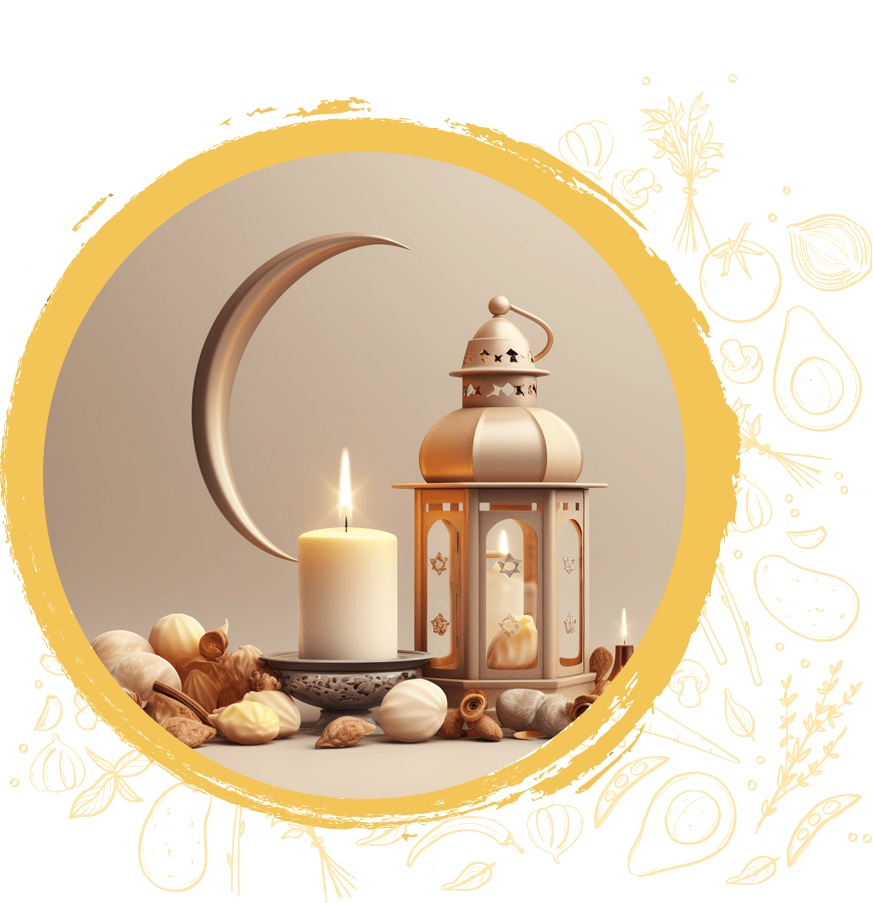Savour the Traditions of Ramadan
A Guide to Fasting and Feasting

If food was a language, then iftar would be the most beautiful expression of love … for your belly … and for your heart.
As the holy month of Ramadan draws to a close, most of us are going to miss delicious aromas wafting from every street corner. Laden with authentic Indian, Persian, Arabic, Lebanese, and Egyptiandelicacies, we eagerly look forward to this absolutely gluttonous celebration every year.
Why do people fast during this month? What are the intricacies of the Ramadan fast?
Here’s a brief overview that can help you.
The ninth month in the Islamic calendar is celebrated as the holy month of Ramadan. Muslims believe that the first verses of the Qu’ran were revealed to Prophet Mohammad while he was fasting during this month. It is a month of great significance and is associated with self-control, compassion, patience, and
abstinence.
Fasting during Ramadan has its own set of rules.
- Abstain from food and drink (including water) from sunrise to sunset
- No smoking
- No alcohol
- Break fast at sunset with 1 or 3 dates and a few sips of water
The Intermittent Fast
Although Ramadan will culminate in Eid-ul-Fitr this Friday, weight-watchers and those of us who are
consciously eating healthy can incorporate a lot of the Ramadan fasting principles in our everyday lives.
Eating small, well-balanced meals between fixed periods of the day can help support our intermittent fasting. Keep in mind though that hydration is an important part of intermittent fasting. So, even if you cannot drink water during the Ramadan fasting period, be sure to keep your hydration levels in check at other times.
Suhoor - the first/last meal of the day
A wholesome power-packed meal that should get you through the day, suhoor (also known as sehri) is
consumed early in the morning (before sunrise). Ironically, many regard suhoor as the last meal of the day.

Below is a list of healthy foods consisting of complex carbohydrates and proteins that can get you through the day
● Pulses like moong, matki, chana
● Plain curd/dahi
● Fruits with curd
● Water-based foods like watermelon, strawberries, cucumber, etc.
● Milk and dairy products like cheese, paneer, buttermilk, etc.
● Oatmilk, pea milk, almond milk (if you’re vegan or lactose intolerant)
● Oatmeal
● Mango smoothie
● Peanut butter and banana smoothie
● Boiled eggs
● Boiled chicken with veggies
● Whole fruits and nuts
Add generous amounts of watermelon, pumpkin, sunflower, and chia seeds to your oatmeal and
smoothies.
Iftar
If you’ve been lucky enough to get an Iftar invitation, you’ll know that every corner of the table(s) is
laden with foods and drinks that will make your heart sing! We kid you not. After more than 12 hours of
fasting, you’re likely to grab the first dish you’ll see. But here’s where you need to read the fine print.
In order to break their fast, Muslims have 1 or 3 dates along with a few sips of water. This was believed
to be how the Prophet broke his fast centuries ago. In terms of nutrition, this is an excellent way to
reintroduce food and drink into your parched system. Dates are an excellent fiber, iron, magnesium, and
natural sugars source. Breaking your fast with dates and water helps restore blood sugar.
But isn’t Iftar all about kebabs, biryani, and sheer khurma?
Long story short, nope!
Iftar is quite literally the most delicious offering for your belly (and heart)!
And here’s how you can begin your gluttonous journey around an Iftar table.
Start with Soups
Lentils, chicken, vermicelli, and veggies are some of the most common ingredients in soups during
Ramadan.
Next
Fresh fruits, thandai, lemonade, Rooh Afza
Kickstart your metabolism with plenty of fluids, fresh water-based fruits, and cool drinks.
Move on to Fattoush
A deliciously rich combination of fresh veggies, topped with bread, with a drizzle of olive oil and/or pomegranate molasses – this one’s mouthwateringly good!
Now you dig into the Mains
Consisting of stews, kebabs, stuffed veggies, meats (including chicken, and fish), beans, dairy, breads…
and the biryani! A little side note: Biryani is derived from the combination of the Persian words ‘Birian’
meaning fried before cooking and ‘Birinj’ meaning rice.
Remember to savour Haleem
Originating in the sandy dunes of Arabia, Haleem is made with ghee, meats, rice, whole pulses, and local spices. In India, you’ll find the best Haleem during Ramadan in the streets and homes of Hyderabad.
End on a sweet note with Sevaiiyan, sheer khurma, and kellaj
The latter is really the show-stealer. Originating in Lebanon, Kellaj (also known as kallaj) consists of
pastry dough filled with ashta (clotted cream), fried in, and drizzled with sugar syrup. It is then sprinkled with generous amounts of ground pistachio, and topped with candied orange blossom.
We’d like to believe we’re ending this blog on a sweet note too, as well as making sure we remind you to get your belly full of the delicious flavours of Ramadan before the end of the holy month.
Eid Mubarak from Team Thinking Forks

About author
